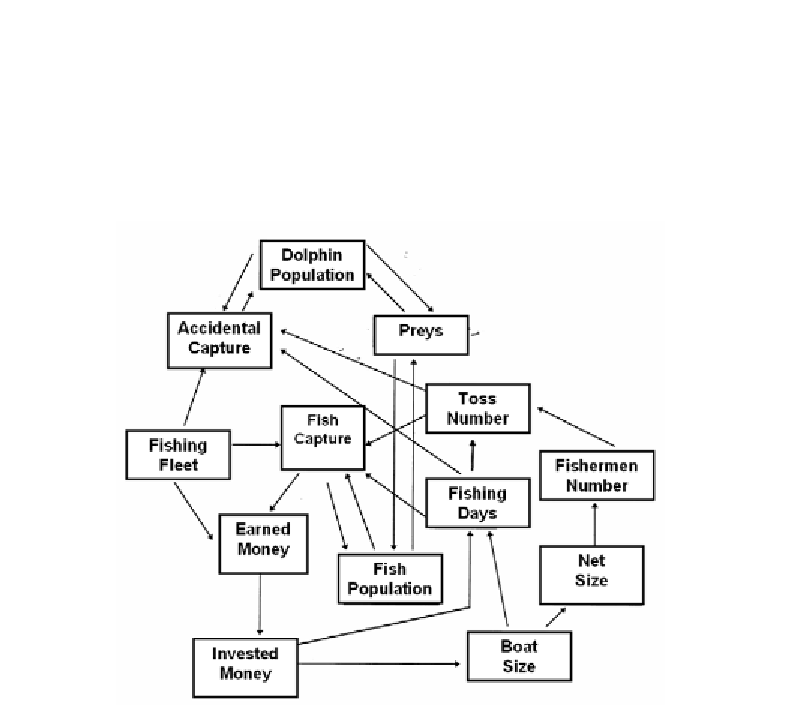Biology Reference
In-Depth Information
Interaction Dolphin-Fishery
The causal loop in the dolphin-fishery interaction model in Figure 2 depicts how
economic factors influence the fishing effort and how this effort influences the accidental
capture of dolphins. Data support that this type of interaction (in this case) is indirectly
predatory because dolphins and target fish of the fishery feed on the same prey and it is
during this feeding behavior that these mammals are arrested in the
nets.
Figure 2. Causal loop Model explaining the dynamics of the interaction dolphin-fishery in the
Amazonian Estuary.
T
HOUGHTS AND
C
ONCLUSION
The largest problem in the characterization of the artisan fishing fleet is its structural
heterogeneity, supported in the low correlation coefficients among the vessels' structural
components. The variable with the largest correlation value and that best described the fleet's
fishing power was cargo hold size. As noted by Refskalefsky (1985), boats with cargo holds
are at an advantage compared to other vessels since they can preserve the fish in ice. This
advantage explains why the number of boats with cargo holds has increased quickly. That
structural adoption requests a great investment for most of the fishermen but results in the
likelihood of extending the length of fishing trips to 15 days fishing, without returning to port,
and also of selling the fish in Vigia or Belém reaching a better price. However, the cargo hold
is not always filled in a trip. Crew size (FN) is an appropriate measure of the fishing power
for both strata, preferable to the use of questionable evaluation variables which can create
error. This measure was used by Petrere (1978) in the fishing effort in the Middle Amazon,


Search WWH ::

Custom Search